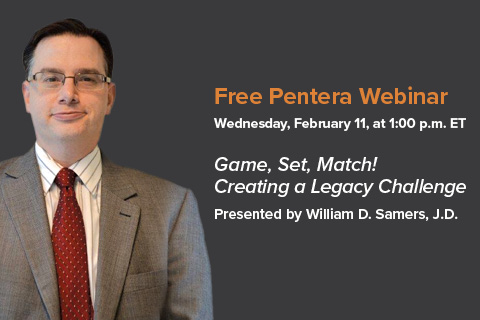The Pentera Blog
Groundbreaking Research on Donors to Be Presented at NCPP
You are soliciting a very targeted audience for planned gifts, of course, but most planned giving research has not focused on that audience. Now there is research that is truly relevant: a new study on the characteristics and behavior of actual donors will be presented at NCPP 2015 in a session with Pentera President & CEO Claudine A. Donikian.
"Several years ago I realized that there was very little research about the behaviors of actual donors who had made actual gifts or actual gift intentions," Ms. Donikian said. "Instead, the majority of existing research surveyed random people from the general U.S. population about what might motivate them to make a planned gift. But I believe that this is misleading because you, nonprofits, aren't soliciting random people for planned gifts. You are soliciting a very targeted audience with specific profiles: loyal members or alums who are likely 50 or older, highly educated, and wealthy. So I decided to commission a national study with Indiana University's Lilly School of Philanthropy that looks at big data about actual donors who made actual gifts and are likely tracked by the organization: legacy society members. This is the second phase of a multi-phase research project."
The results will be presented by Ms. Donikian and Una Osili, director of research and professor of economics and philanthropic studies at the Indiana University Lilly Family School of Philanthropy. The session is scheduled for 10 a.m. on October 23.
The research involved an in-depth analysis of legacy society membership data, exploring the following questions:
- What are the characteristics of legacy society members? Are there any changes in membership profiles over time?
- Who changed, or canceled, their planned gifts after they first joined the legacy society?
- How do age, ethnicity, gender, family structure, and location influence bequest donor behavior?
- Which types of planned giving vehicles and instruments did these members choose?
- How much did members give or plan to give through their planned gifts?
- Which types of programs received their planned gifts support?
The 2015 National Conference on Philanthropic Planning is Oct. 21-23 in Lake Buena Vista (Orlando), Florida. For information about the conference and to register, go to www.pppnet.org.


